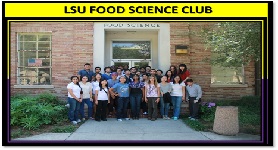By: Kim Au
Back when I was a middle schooler, I would go to the to the candy store every so often to get root beer barrels and popcorn-flavored jelly beans. Next to the register would always be a little display of Hotlix, lollipops with an insect inside of them. Each time I paid, I would think, “One day I’ll have the guts to try one of those weird things.”
Unfortunately, that day still hasn’t come. But according to the Food and Agricultural Organization (FAO), entomophagy, the consumption of insects, may soon become the norm. In a 200-page book, the FAO wrote that eating insects such as ants and grasshoppers could be the key to solving global food insecurity.
The book, titled Edible Insects: Future Prospects for Food and Feed Security, stresses not only the nutritional value and availability of insects, but also considers the additional benefits of insect farming and eating. These advantages include lower greenhouse gas emissions and lower water requirements than livestock, higher efficiency in converting feed into edible meat, and culinary versatility. They can be eaten whole, or ground into a powder or paste and incorporated into other foods.
Although insects supplement the diets of 2 billion people, primarily in Asia, Africa, and Latin America, it is obvious that transitioning insect eating to a culturally-acceptable practice in the West is going to take quite some time. Perhaps we should enlist some celebrity chefs to create insect-centric dishes to entice the population into trying this new form of protein. But then again, we’ve been eating parts of insects our whole lives. The Food Defect Action Levels published by the USDA allows certain levels of insect fragments into our food supply. For instance, peanut butter is allowed to have up to 30 insect fragments per 100 grams of product. However, there are many other things to consider before entomophagy can even begin to go mainstream, such as large scale farming techniques and possible allergies.
While I love the fact that eating creepy crawlies has environmental and nutritional benefits, I don’t think I could incorporate mealworm meatballs or grasshopper burgers into my diet. The ick factor is just a little too much for me. But who knows, maybe I’ll change my mind if I finally try a Hotlix.
Have you ever eaten an insect? Would you consider trying it?
Photo credit: http://www.hotlix.biz/






I’ll try anything once. Plus if it tastes good, I really don’t care what it’s made of (as long as it’s safe). But as far as a food source goes, I don’t think I could eat enough insects to be full. Another issue I have is getting legs and wings stuck in my teeth. It doesn’t seem very pleasant. If it was ground up and used as an ingredient then I might be more apt to eat it. So far, i have not eaten any bugs (willingly) but I have heard that spiders crawl into our mouths while we sleep (lol). Also not sure if lobsters count as bugs…because I eat a ton of those! I do love watching bizarre foods though and seeing all the weird insects people around the world eat. Really cool post, Kim!
I am terrified of bugs, so the thought of eating them will likely not be crossing my mind anytime soon! Interesting post though! 🙂
I bought a box of Salt & Vinegar Fried Crickets at the St. Louis Zoo last year. They were actually really good. The Mexican Spiced Mealworms were a pass though, we threw those away.
Very interesting post but i don’t even like to see bugs so i would never think of eating it ever.